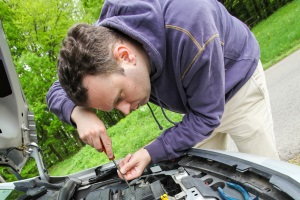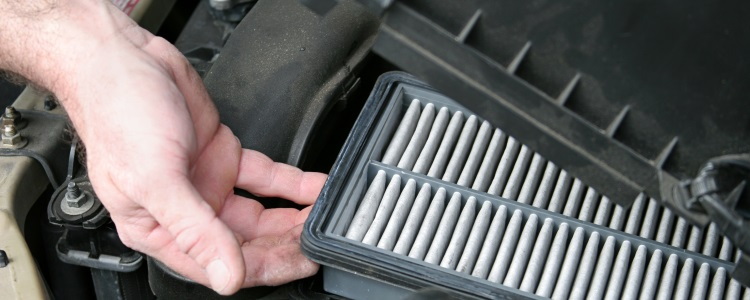Keeping up with basic maintenance is important as a car owner. You want to make sure your vehicle is running properly and is up to date on any needed upkeep and repairs. Although many repairs require a mechanic to perform them, there’s some car maintenance you can do yourself at home for little to no cost.
DIY Car Service Checklist
Some repairs should only be done by a mechanic, such as replacing a water pump or timing belt. But, there are plenty of small repairs that can be done at home in your garage. Not only will you save money by doing these at home, but it’ll get you in the swing of keeping up with your car’s required maintenance:
 Changing the battery – Car batteries have a lifespan of around three to five years, so you should expect to change it at least once during the life of your vehicle. Although changing the battery takes a little more legwork, you’ll save any additional charges you’d need to pay when taking it in to a service center – you’ll only be responsible for purchasing the battery, which usually range from $90 to $170. A word to the wise is to be extra cautious when handling battery cables, as mishandling them could result in an electrical shock.
Changing the battery – Car batteries have a lifespan of around three to five years, so you should expect to change it at least once during the life of your vehicle. Although changing the battery takes a little more legwork, you’ll save any additional charges you’d need to pay when taking it in to a service center – you’ll only be responsible for purchasing the battery, which usually range from $90 to $170. A word to the wise is to be extra cautious when handling battery cables, as mishandling them could result in an electrical shock.- Replacing the air filters – Most mechanics charge for replacing a vehicle’s cabin air filter and engine air filter, but it’s an easy task to do at home. You just need to purchase new filters and swap out the old ones. The engine air filter is typically housed in a large plastic box in the engine compartment, while cabin air filters are usually found in or under the dashboard near the glove compartment (consult the owner’s manual for the exact location).
- Checking tire pressure – Not keeping up with tire pressure can affect the safety of your vehicle. You can purchase a pen-style pressure gauge for checking tires for as little as a few dollars. To check your tires’ air pressure, unscrew the valve stem dust cap and press the gauge to the valve. If the pressure isn’t where it should be, just head to your local gas station to air them up.
Fluid Changes to Do Yourself
There are a few fluids that you can change yourself to save a little money:
- Changing the oil – Depending on your vehicle and the oil you use, it should be changed anywhere from every 3,000 to 10,000 miles – recommended intervals are listed in your vehicle’s user manual. You’ll need to purchase oil, which typically costs anywhere from 15 to 40 dollars, and a new oil filter, which should cost anywhere from six to 15 dollars. Compared to prices charged at a service center, a DIY oil change can be worthwhile. Be aware that you’ll also need to take the old oil to a local recycling center, which should generally cost you only a few dollars more.
- Checking other fluids – Checking your vehicle’s fluids is simple. Oil and transmission fluids use a dipstick, while coolant and power steering fluids use clear reservoirs and a fill line. To check your oil and transmission fluids, pull out the dipstick, wipe it off, dip it back in, pull it out, and read the level. When you check the power steering fluid and windshield wiper fluid, see what level they’re at in the reservoir. Check the coolant by observing the level of coolant in the overflow tank when the engine is cold.
The Bottom Line
You can save yourself a lot of money by doing simple car maintenance at home. But, sometimes, your vehicle should go into the shop if the repair is too complicated or requires special tools.
If your car is beyond repair and you need a new one, but don’t know where to go, let Auto Credit Express help. We know how difficult it is to get the financing you need with less than stellar credit. Let us help by providing you with a dealer who has the lending resources that know how to handle consumers with credit challenges. If you’re ready to start the car buying process, take the first step and fill out our auto loan request form today.
















